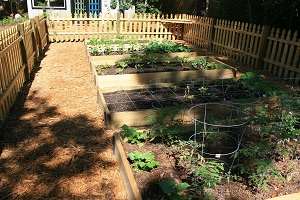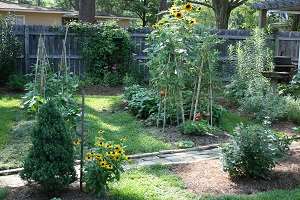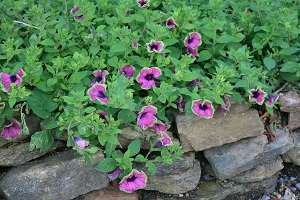By Dr. Gary R. Bachman

Many people are interested in having home vegetable and flower gardens, but many urban homes have small lots. Home gardeners in this situation may not think they have enough room. Others, especially inexperienced gardeners, may be discouraged by the amount of time and work required to build a new garden bed.
A good solution to this problem is to grow vegetables and flowers in compact, raised beds. By using an intensively cultivated area, you need less time and space to produce vegetables that taste great and flowers that feed the soul.
Gary Bachman
Gary Bachman
A raised bed is exactly what the name suggests -- a landscape or garden bed that is higher than the surrounding grade. Raised beds offer many advantages for gardening in Mississippi:
- Research suggests plant growth is enhanced, primarily due to the much improved drainage of the raised bed compared to in-ground gardening.
- They aid gardeners who have sore backs and achy knees by bringing the garden up a little closer, which I particularly appreciate.
- Growing in raised beds allows the gardener to reach into the bed from both sides.
he first planning step is deciding where to put your garden. Most vegetables prefer full sun all day, but they can get by with at least six hours of sun. If all-day sun is not possible, select a site that receives morning rather than afternoon sun.
Another very important factor to consider is how close your bed is to the water faucet. Successful gardens must have easy access to irrigation.

And don’t forget to call 811 and have any underground utilities located. This really is a must for any garden and landscape project.
You can raise the planting bed by simply piling up growing mix and making walkways on either side. But using hardscape materials to build sides will keep your garden looking tidy.
The choice of materials is the gardener’s decision. If you don’t want to use treated lumber, then cedar and redwood have natural resistance to decay. These woods are more expensive but will last much longer than untreated pine. Other options include using block, recycled concrete or recycled plastic boards.
The construction parameters of raised beds are quite simple. You can make the raised bed as long as you want, but don’t make it over 4 feet wide. This width allows you to reach plants in the middle from either side without walking in the bed.

Your new raised bed is really just a large container, so use a growing mix made for containers. And because the raised bed is contained with side walls, no one walks through it to compact the growing mix. That means the soil will stay light and fluffy and ready for any season.
To calculate the volume of growing mix you need for your raised bed, just multiply the length by width by depth, using feet for all the dimensions.
Bagged, premixed potting soil or soilless mixes are readily available from garden supply stores. This is a quick way to fill your bed, but it is the most expensive. So here’s an alternative mix recipe that will give the same great results: use equal volumes of peat moss, compost and pine bark. To make measuring easier, remember that a 5-gallon bucket hold two-thirds of a cubic foot.
Constructing raised beds and growing vegetables and flowers in them is one way to help new and old gardeners have greater success in the garden and landscape.
Source: msstate.edu